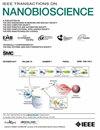Design of DNA Storage Coding Scheme With LDPC Codes and Interleaving
IF 4.4
4区 生物学
Q1 BIOCHEMICAL RESEARCH METHODS
引用次数: 0
Abstract
In this paper, we propose a new coding scheme for DNA storage using low-density parity-check (LDPC) codes and interleaving techniques. While conventional coding schemes generally employ error correcting codes in both inter and intra-oligo directions, we show that inter-oligo LDPC codes, optimized by differential evolution, are sufficient in ensuring the reliability of DNA storage due to the powerful soft decoding of LDPC codes. In addition, we apply interleaving techniques for handling non-uniform error characteristics of DNA storage to enhance the decoding performance. Consequently, the proposed coding scheme reduces the required number of oligo reads for perfect recovery by 26.25% ~ 38.5% compared to existing state-of-the-art coding schemes. Moreover, we develop an analytical DNA channel model in terms of non-uniform binary symmetric channels. This mathematical model allows us to demonstrate the superiority of the proposed coding scheme while isolating the experimental variation, as well as confirm the independent effects of LDPC codes and interleaving techniques.利用 LDPC 编码和交错设计 DNA 存储编码方案。
在本文中,我们利用低密度奇偶校验(LDPC)码和交织技术提出了一种新的 DNA 存储编码方案。传统的编码方案一般在oligo间和oligo内两个方向都采用纠错码,而我们的研究表明,通过差分进化优化的oligo间LDPC码足以确保DNA存储的可靠性,因为LDPC码具有强大的软解码功能。此外,我们还应用了交错技术来处理 DNA 存储的非均匀错误特性,以提高解码性能。因此,与现有的最先进编码方案相比,所提出的编码方案将完美恢复所需的寡核苷酸读数减少了 26.25% ~ 38.5%。此外,我们还根据非均匀二进制对称信道建立了 DNA 信道分析模型。通过这个数学模型,我们可以证明拟议编码方案的优越性,同时隔离实验变化,并确认 LDPC 码和交织技术的独立影响。
本文章由计算机程序翻译,如有差异,请以英文原文为准。
求助全文
约1分钟内获得全文
求助全文
来源期刊

IEEE Transactions on NanoBioscience
工程技术-纳米科技
CiteScore
7.00
自引率
5.10%
发文量
197
审稿时长
>12 weeks
期刊介绍:
The IEEE Transactions on NanoBioscience reports on original, innovative and interdisciplinary work on all aspects of molecular systems, cellular systems, and tissues (including molecular electronics). Topics covered in the journal focus on a broad spectrum of aspects, both on foundations and on applications. Specifically, methods and techniques, experimental aspects, design and implementation, instrumentation and laboratory equipment, clinical aspects, hardware and software data acquisition and analysis and computer based modelling are covered (based on traditional or high performance computing - parallel computers or computer networks).
 求助内容:
求助内容: 应助结果提醒方式:
应助结果提醒方式:


